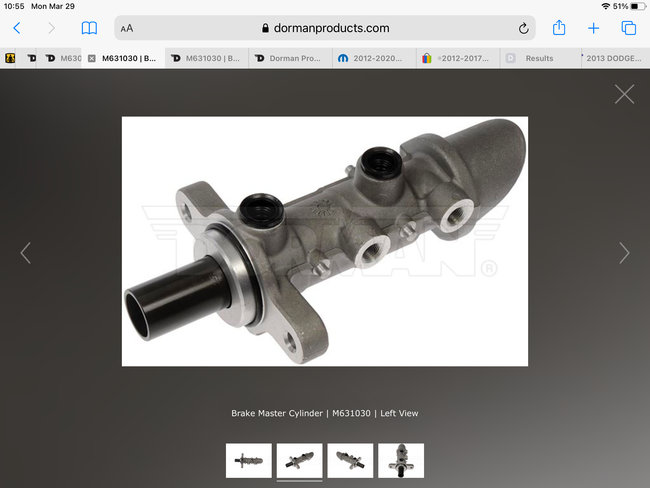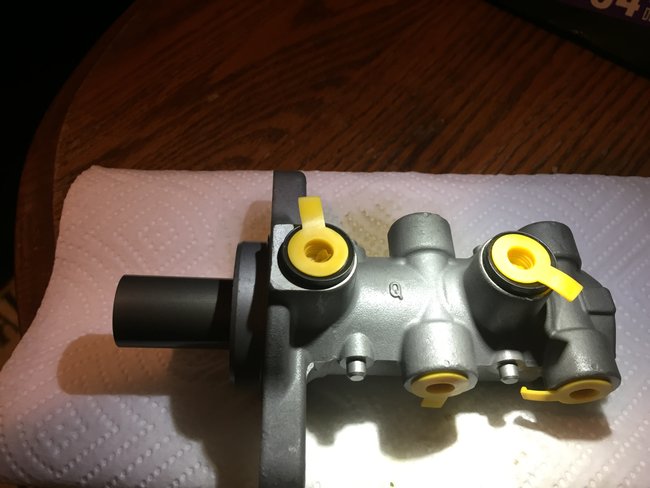The next problem is Chrysler has always had a reputation for good parts interchangeability between models and years. In the case of sensors in particular, what they currently have for a new car model might not fit because the connector will bump into something. That connector will be redesigned, but then it gets an entirely new part number. This was the case with oil filters in the early '70s. You could use the standard long one or the new shorter one on any engine, but the mounting flange was angled rearward on the Darts because of the smaller engine bay. The longer filter rubbed against the firewall when it was unscrewed. This was another example of what worked for the application wasn't necessarily the part number listed.
The same is true for computer modules. Ford is famous for making major mid-model-year changes, and you have to supply the build date when ordering parts. Chrysler makes mid-year changes too, but while some parts warrant new part numbers, they all still work on all cars from that model year. Up to the mid '90s, if they found a problem that needed to be fixed, the only way to do that was to replace the computer. Typically that involved a recall after they found some unusual event that resulted in emissions exceeding mandated levels.
The dealers were supplied with the new computers with their new part numbers. If you found an older one in a salvage yard, it would still work in that application. That's why we say to go by the application, not the part number. Starting in the mid '90s, even as early as 1993 in the case of my Dynasty, updates and recalls were handled by installing updated software rather than replacing the entire computer. I've noticed on GMs and Fords, when that is done, the mechanic puts a sticker under the hood referring to a "campaign" that was performed, meaning a recall. Chrysler supplies a replacement sticker to put on the computer. It has the new part number on it. Here again, different number, same application.
I suspect no one ever produced a cross reference chart because as far as the engineers and the lawyers are concerned, a computer with the old part number can't be used to replace one with a newer number. While it will function perfectly fine, we don't usually get to know why they don't want it in there. It could be some rarely-used function might not work correctly when it's really hot outside or really cold. It could be tail pipe emissions are too high when accelerating up a steep hill before the engine is fully warmed up. It could even be the air bags don't deploy if the crash is at a certain angle. With any corrections like those, the computer gets a new part number. If it's just a minor revision, as in the case of my Dynasty, to address any of ten common complaints of transmission shift quality, that doesn't even warrant a change in the part number. If a rebuilder changes a part for improved reliability, that would get the next higher letter in the suffix, but the original number would be the same.
Since you're looking at used computers, I have to add one more comment of value. This might not apply to a car as new as a 2013 model, but it's worth mentioning anyway. If your car has the factory-installed anti-theft system, you can use any used Engine Computer or Body Computer from any similar donor car. The anti-theft programming lives in those two computers. If the used computer you install doesn't have that programming, it is actually in there, but it hasn't been activated. That will be done by the other computer as soon as you turn on the ignition switch. At that point, that activated anti-theft programming can not be undone. If you take that replacement computer back out and put it in the donor car it came from, it is going to teach that programming to that car's other computer. At that point you'll have a crank / no-start because both computers are waiting for the "disarm" signal that's never coming. Now the only way to solve that car's no-start is to replace both computers at the same time with two that never had the anti-theft programming activated. We usually don't know that with cars in a salvage yard. The only way to know for sure is to buy two rebuilt computers from the dealer. They always come with the anti-theft programming not activated.
By 2013, most models included a factory anti-theft system. This warning applies to models as far back as some '92 models.
Was this helpful?
Yes
No
Thursday, March 25th, 2021 AT 8:22 PM




